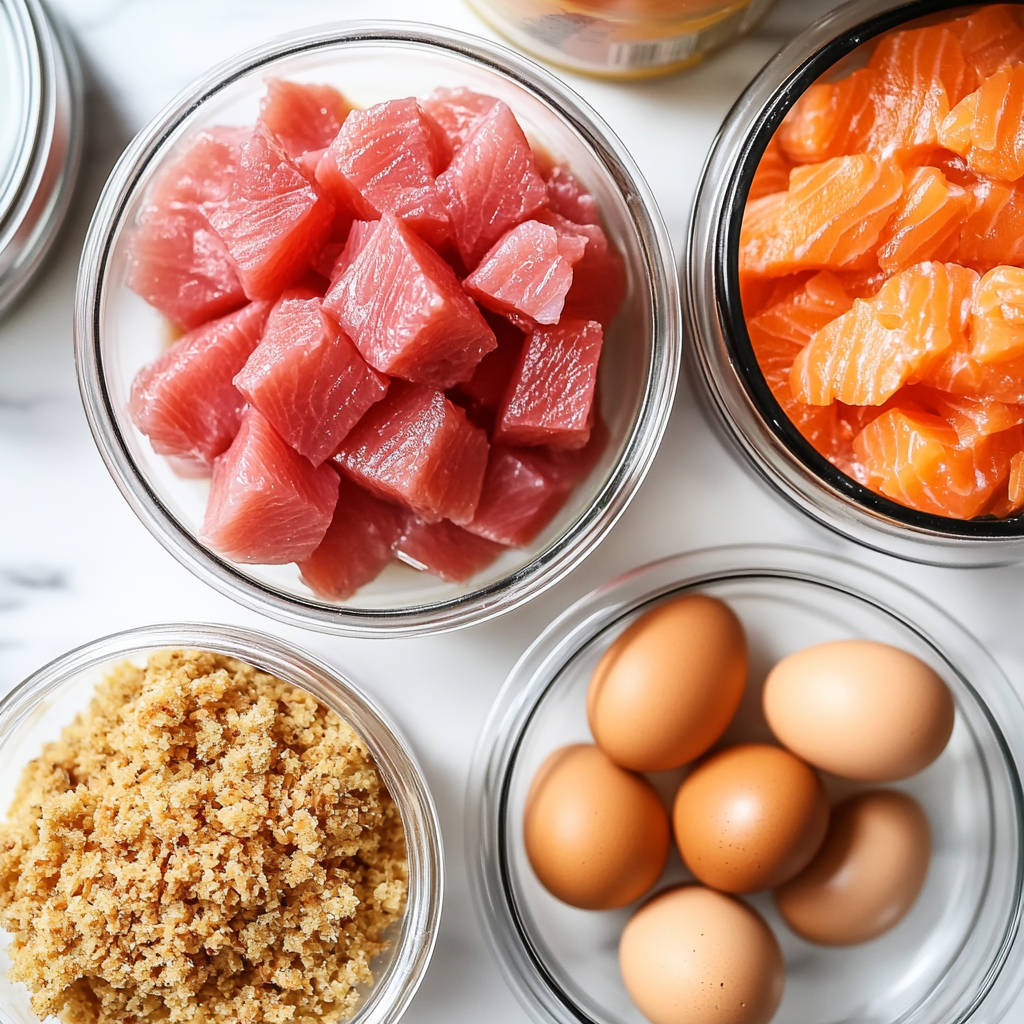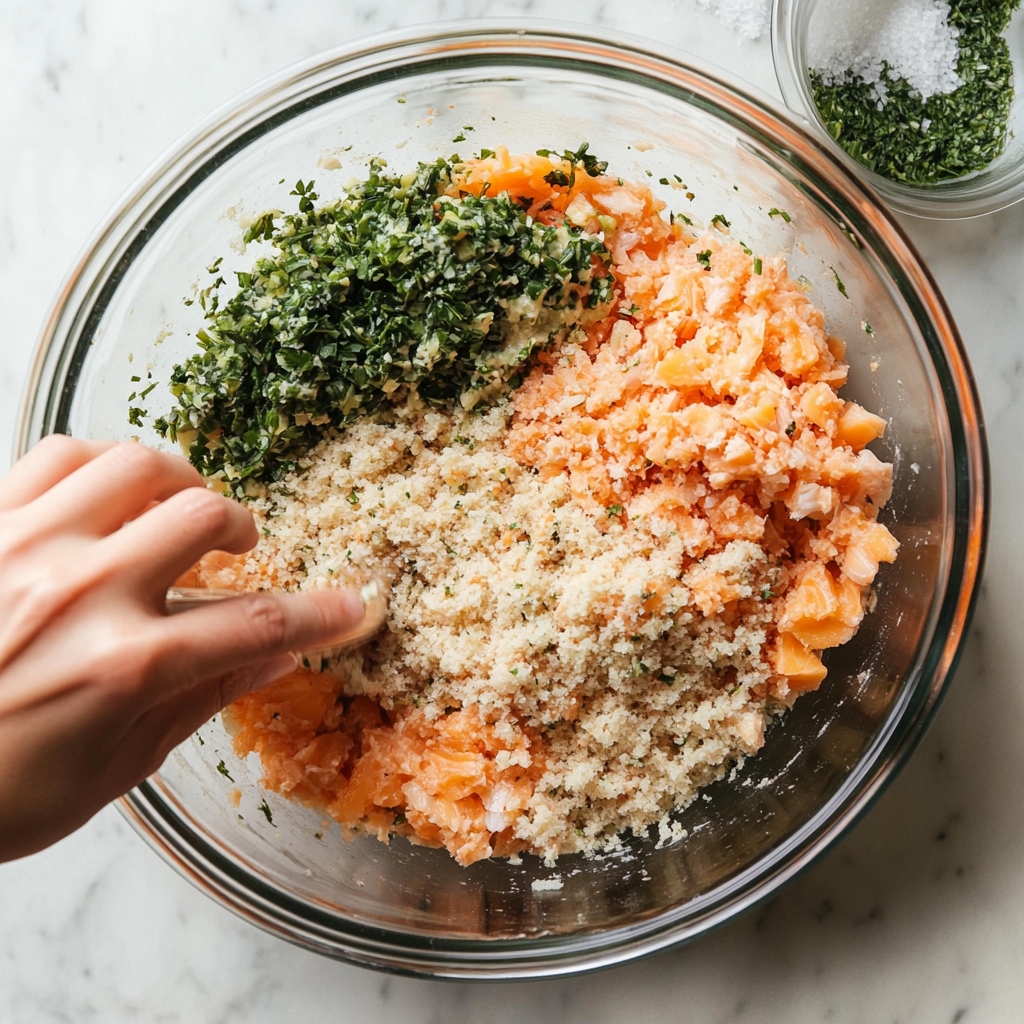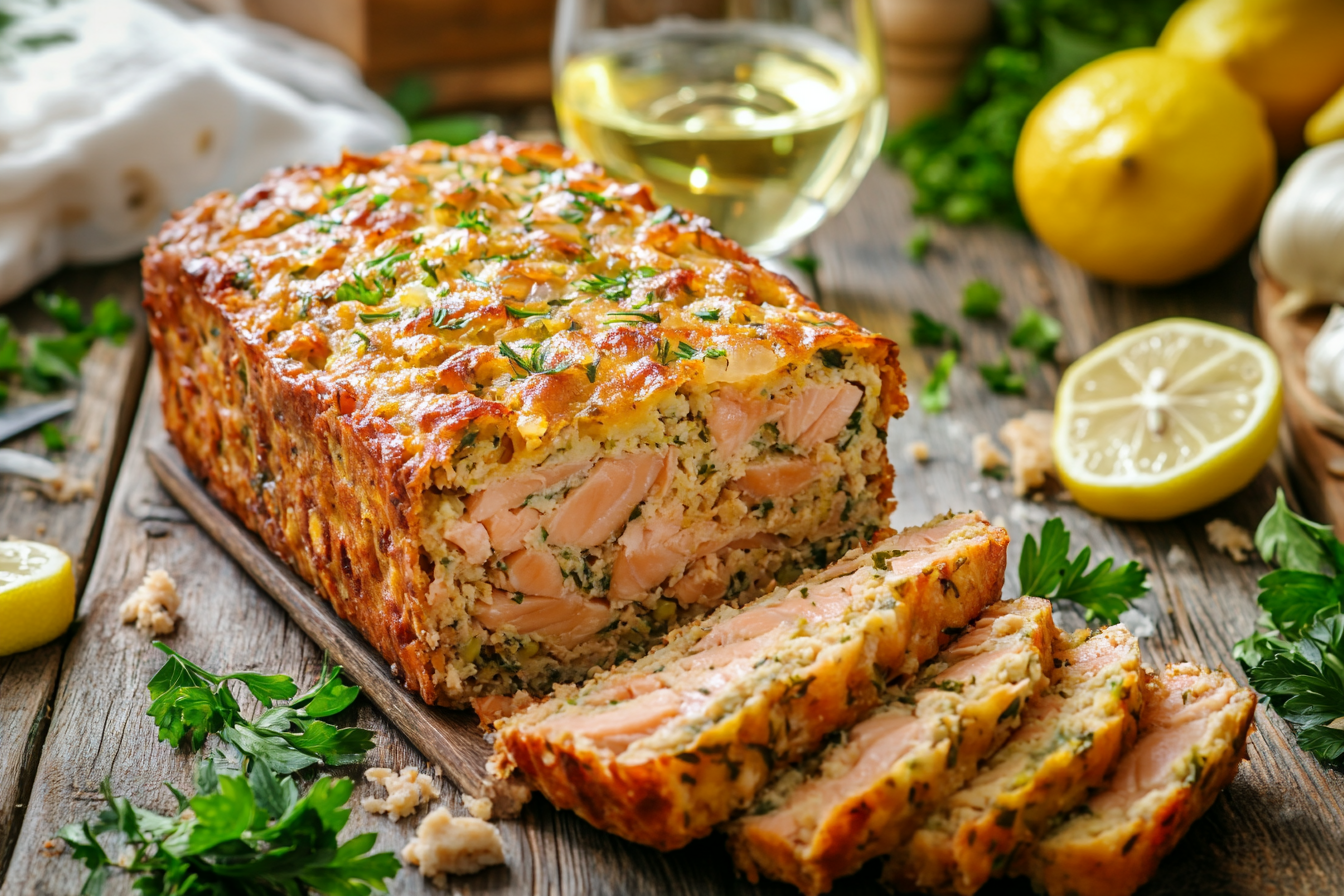Seafood lovers often wonder whether it’s possible to combine different types of fish in the same dish. In this case, we’ll explore a commonly asked question: can tuna and salmon be used in the same loaf recipe? Both fish are versatile, flavorful, and packed with health benefits, but how well do they work together in a loaf? Let’s dive in and discover the possibilities!
Why Combine Tuna and Salmon?
Combining tuna and salmon in the same loaf brings an exciting depth of flavor to your dish. Tuna, often known for its mild and meaty texture, pairs surprisingly well with the richer, more robust flavor of salmon. The contrasting but complementary profiles of these two fish result in a loaf that’s balanced, nutritious, and satisfying.
Nutritional Benefits
One of the best reasons to consider combining tuna and salmon is their combined nutritional punch. Both fish are excellent sources of protein, omega-3 fatty acids, vitamins, and minerals. Let’s break down their health benefits:
- Tuna is a low-calorie fish that is rich in protein, vitamin D, selenium, and vitamin B12. These nutrients help maintain a healthy metabolism, support muscle repair, and boost immune function.
- Salmon, particularly wild-caught, is one of the richest sources of omega-3 fatty acids. Omega-3s are essential for reducing inflammation, supporting heart health, and improving brain function. Salmon is also high in astaxanthin, a powerful antioxidant that gives the fish its signature pink color.
By combining these two fish, you create a dish that is not only flavorful but also beneficial for your health. If you’re interested in other healthy seafood recipes, check out our old-fashioned salmon patties recipe for another way to use salmon in a different form.
Culinary Science Behind Combining Tuna and Salmon
The textures of tuna and salmon make them ideal candidates for combination in a loaf. Tuna offers a firm, almost steak-like texture, while salmon has a softer, fattier composition that adds moisture. When these two fish are bound together with breadcrumbs, milk, and egg, the loaf takes on a consistency that’s neither too dense nor too soft. This creates a well-balanced bite that’s more enjoyable to eat than a loaf made with only one type of fish.
Additionally, combining tuna and salmon offers the opportunity to play with a variety of seasonings and flavors. Since tuna is mild, it absorbs flavors well, while salmon’s richness provides a robust backdrop. This dynamic makes the loaf more complex and interesting.
Culinary Techniques for the Best Fish Loaf
To make the best tuna-salmon loaf, mastering a few culinary techniques can elevate your dish:
- Flaking the Fish: Properly flake both the tuna and salmon to ensure that the loaf has an even texture. You don’t want large chunks of fish, but rather an integrated mixture.
- Binding: Eggs and breadcrumbs serve as the binder for this recipe. Make sure to mix these thoroughly to prevent the loaf from falling apart.
- Moisture Management: Canned tuna can be dry, while salmon is oilier. The combination helps, but adding a bit of milk or cream will ensure the loaf doesn’t become too dry during baking.
Ingredients for a Tuna-Salmon Loaf Recipe
Making a loaf using both tuna and salmon isn’t complicated. Below is a breakdown of the ingredients you’ll need:

- 1 can of tuna (drained)
- 1 can of salmon (drained, bones and skin removed)
- 1 cup of breadcrumbs (can be replaced with gluten-free breadcrumbs if needed)
- 1/2 cup of milk
- 1 egg
- 1 small onion, finely chopped
- 1/2 teaspoon of salt
- 1/4 teaspoon of black pepper
- 1 tablespoon of lemon juice
- 1 tablespoon of fresh parsley (optional)
- 1 tablespoon of Dijon mustard (optional)
To experiment with textures and flavors, you can swap canned fish for fresh or smoked varieties. The use of fresh herbs such as dill or thyme can also elevate the dish. If you are interested in other smoked fish ideas, our smoked salmon recipe guide may offer additional inspiration.
Instructions for Preparing Tuna and Salmon Loaf
- Preheat the oven to 350°F (175°C).
- In a large bowl, combine the canned tuna and salmon. Make sure both are well-drained.
- Add the breadcrumbs, milk, egg, chopped onion, salt, pepper, lemon juice, parsley, and mustard (if using). Mix thoroughly until all the ingredients are well combined.
- Grease a loaf pan and pour the mixture into the pan, spreading it evenly.
- Bake for 45-50 minutes, or until the top is golden brown and a toothpick inserted comes out clean.
- Let the loaf cool for a few minutes before slicing and serving.
If you’re looking for other recipes that make good use of leftover ingredients like bread or fish, check out our bread cake recipe for more sustainable meal ideas.

The History and Cultural Significance of Fish Loaves
Fish loaves, or fish-based dishes formed into a loaf, are not unique to modern cuisine. They have a long history across various cultures, often as a way to make use of available ingredients and stretch food supplies for larger families.
Fish Loaves in European Cuisine
In many parts of Europe, particularly during times of scarcity, fish loaves became a staple dish. During the 19th and early 20th centuries, meat was often too expensive for everyday meals, so families turned to readily available fish. Tuna and salmon were considered luxury items in some regions, but canned varieties allowed them to become more accessible. Recipes were often passed down through generations, and families used a mix of whatever fish and ingredients they had on hand to create hearty, flavorful loaves.
Fish Loaves in North America
In North America, particularly in coastal regions, fish loaves have a long tradition. Many communities relied on what was readily available in nearby waters, and fish loaves became a way to utilize fresh catches. Tuna and salmon loaves became popular in the mid-20th century with the rise of convenience foods like canned fish.
Sustainable Sourcing of Tuna and Salmon
One of the most pressing issues in the seafood industry today is sustainability. As consumers become more conscious of the environmental impact of their food choices, it’s essential to select responsibly sourced tuna and salmon for your loaf recipe.
Choosing Sustainably Sourced Tuna
- Look for tuna labeled as pole-and-line caught or certified by the Marine Stewardship Council (MSC). This ensures that the tuna was caught using methods that have minimal impact on the ocean ecosystem.
- Skipjack tuna is often a more sustainable choice than other species, as it has a faster reproductive cycle and is not as heavily overfished as larger species like bluefin tuna.
Choosing Sustainably Sourced Salmon
- Wild-caught Alaskan salmon is generally considered the most sustainable option. It comes from fisheries that are well-managed and do not have the same environmental concerns as some farmed varieties.
- If you choose farmed salmon, look for Aquaculture Stewardship Council (ASC) certification, which ensures responsible farming practices.
By making sustainable choices, you can enjoy this dish knowing that you’re doing your part to protect marine life and ocean ecosystems.
Variations on the Tuna-Salmon Loaf
While this basic recipe offers a good starting point, there are numerous ways to customize your tuna-salmon loaf to suit your tastes. Here are a few ideas for taking this dish to the next level:
1. Herb-Infused Loaf
Add fresh herbs like dill, thyme, or tarragon to the mixture to give your loaf a burst of flavor. Herbs can add a refreshing note that complements the rich, fatty salmon and balances the mild tuna.
2. Cheesy Delight
Mix in shredded cheese such as cheddar, Gruyère, or Parmesan for a creamier, more decadent loaf. Cheese adds a rich, savory flavor and enhances the texture, making each bite more satisfying.
3. Spice It Up
If you like a bit of heat, add a teaspoon of cayenne pepper or red pepper flakes to the mixture. You can also experiment with hot sauce or even fresh chili for a spicy kick.
4. Gluten-Free Option
For those who are gluten-sensitive, use gluten-free breadcrumbs. You can even use crushed almonds, oats, or cornmeal as an alternative binder.
5. Fresh Fish Substitutes
If canned fish isn’t your preference, you can use fresh tuna or salmon fillets. Simply cook them beforehand and flake them into the mixture. Fresh fish will make the loaf lighter and more flavorful.
For a more decadent loaf, feel free to try out our mashed potatoes and gravy recipe to serve alongside this dish.
Serving Suggestions and Pairings
A tuna-salmon loaf is quite versatile when it comes to pairing it with side dishes. Some popular options include:

- Mashed potatoes – This classic side dish pairs well with seafood loaves. You can even add gravy for extra flavor. If you’re interested in making the perfect mashed potatoes, our mashed potatoes and gravy recipe can guide you through the process.
- Roasted vegetables – Carrots, sweet potatoes, or Brussels sprouts add a hearty, healthy component to this meal. For a quick and easy side, try roasting your vegetables in the oven or air fryer. For ideas, check out our guide on sweet potatoes in the air fryer.
- Salad – A light, refreshing salad can balance the richness of the loaf. Our shrimp pasta salad might offer you another seafood-inspired side to pair with your loaf.
Pairing Wine with Tuna-Salmon Loaf
Pairing the right wine with your tuna-salmon loaf can enhance the flavors of the dish. Here are some wine pairing suggestions:
- Chardonnay: The richness of salmon pairs well with a buttery, oaked Chardonnay. This wine’s creamy texture complements the fattiness of the fish.
- Sauvignon Blanc: For those who prefer a lighter wine, Sauvignon Blanc’s crisp acidity will cut through the richness of the loaf, providing a refreshing contrast.
- Rosé: A light, fruity rosé is a versatile option that pairs well with both tuna and salmon. Its subtle sweetness and acidity make it a delightful match.
Storage Tips and Reheating Instructions
If you’ve made a large loaf, don’t worry about finishing it all in one meal! Here are some tips for storing and reheating:
- Refrigeration: Store leftovers in an airtight container in the refrigerator for up to 3 days.
- Freezing: If you want to freeze the loaf, let it cool completely before wrapping it tightly in plastic wrap and placing it in a freezer-safe container. It can be frozen for up to 1 month.
- Reheating: To reheat, wrap the slices in foil and pop them in a preheated oven at 300°F (150°C) for about 10 minutes. Alternatively, you can reheat individual slices in the microwave on low power for about 1-2 minutes, though this may slightly alter the texture.
For a lighter alternative to this loaf, consider trying our delicious avocado stuffed with shrimp and crab salad for your next meal.
Conclusion: A Delicious and Nutritious Meal
So, can tuna and salmon be used in the same loaf recipe? Absolutely! By combining the mild flavor of tuna with the richness of salmon, you create a unique dish that is not only packed with nutrition but also incredibly satisfying. Whether you’re hosting a dinner party or just want to try something new for your weeknight meal, this loaf offers a balanced, delicious, and easy-to-make option.
If you’re looking for other seafood recipes to explore, check out our wide selection at Keller Recipes, from hearty soups to light salads and everything in between.

